The events of the last week had my head and my heart very firmly in Boston. I don’t think that I had anything particularly wise to add to the conversation, and it seemed frivolous to write about anything else, thus the silence.
The week was a mix of the horrific, made palatable by seeing acts of courage and kindness throughout that week.
I was however working on various things during the week as I listened to WBR, the Boston NPR station streaming as I worked. As I said, my head and my heart were very much in Boston.
My husband always tells me that I don’t warn him when I’m about to change topics which often leaves him confused. I’m now changing topics.
Each year that I have hosted Seder, my mother has polished up this Seder plate and brought it with her. She would take it back home with her when she returned to Boston.
I believe that it was a wedding gift from one of my parents’ friends. This year, she told my sister to leave the Seder plate with me. This legacy of my childhood is now mine.
Those of you with sharp eyes may recognize it from
Growing up I was proud that my family owned such a famous Seder plate. I did find the photograph on the box a bit confusing because the silverware was our Passover dairy silverware and using it for Seder was just wrong in the deepest way . Adding to my confusion was the pink tablecloth. I assumed that it was a law of the universe that using pink with a meat meal just plain wrong.
Aside from the fact that the art director who designed the Streit’s box did not consult with me about my own very personal associations of particular post War flatware and linens, before designing the matzah box , it was very nice to have our Seder plate be the iconic American Seder plate.
I don’t know who designed the plate. I can tell you as an adult that I like the mix of vaguely Mesopotamian relief designs with the Moderne-lite design. I also love the texts chosen to illustrate the designs. I didn’t have that vocabulary as a kid, but I liked the depictions of slavery along the sides of the plate.
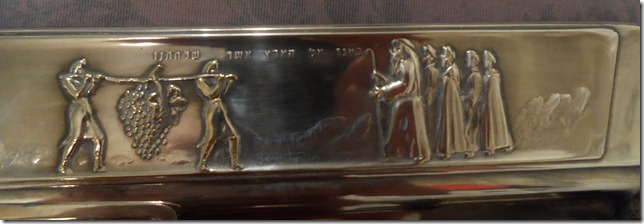
Like the Haggadah, the Seder plate tells the story of slavery and redemption. The plate also obliquely references the Holocaust and the establishment of the state of Israel, by changing the biblical promise to bring us to the land of Israel to the statement that
“ We have arrived in the land which You have given to us”.
My mother had stored the Seder plate wrapped in some flannel from an old nightgown and kept it in her cedar chest. I needed to figure how to store my inheritance in my own home. I made a bag out of a table cloth from y mother in law. I ‘m sure that this WWII era cloth was sold as being a “gay” cloth that would be sure to make your kitchen “gay”.
The cloth had seen more than it’s share of gaity since the 1940’s and had gotten really worn. I made a simple bag using a double thickness of the cloth. I calligraphed the word Pesach/Passover and decorated in what felt to me like 1940’s embellishments.
I added ties and now the Seder plate lives with my Passover things. I know my mother in law will be happy that her cloth will be in use for many years to come. Not that she loved it all that much, she just hated throwing things away. My husband likes having visual reminders of his childhood in use in the house. I prefer using this bag to my mother’s nightgown from 1976.
I wrote this post while listening to
Music for May 1 This earnest socialist music is part of my auditory DNA. You haven’t lived until you have heard The International in Hebrew. I don’t think that any of my relatives were communists. I guess you could have written most of my relatives off as ( even the capitalists) as socialist sympathizers. Listening to this program I was instantly transported to my elementary school years, to Israel Independence Day assemblies where we stood on stage and marched in place while wearing blue and white and sang similar songs.
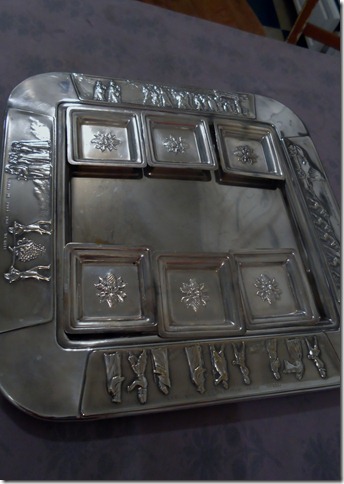
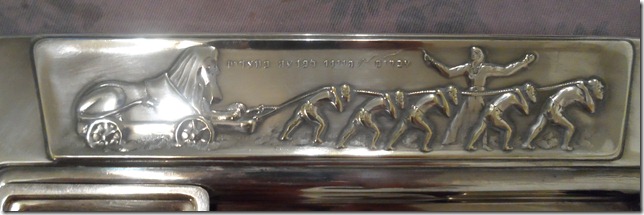

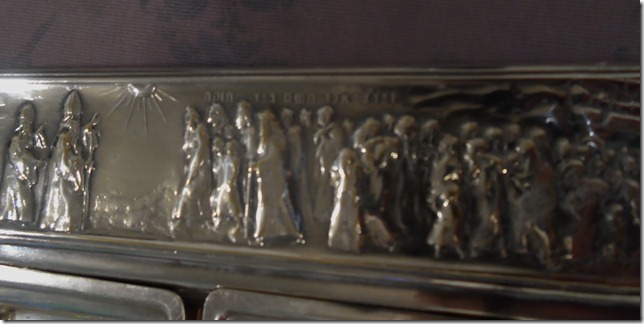
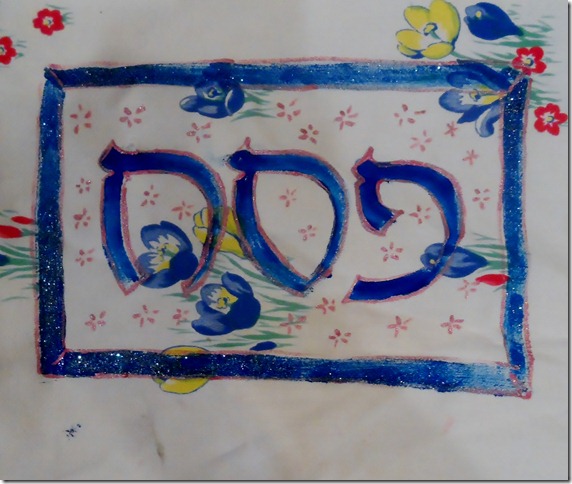
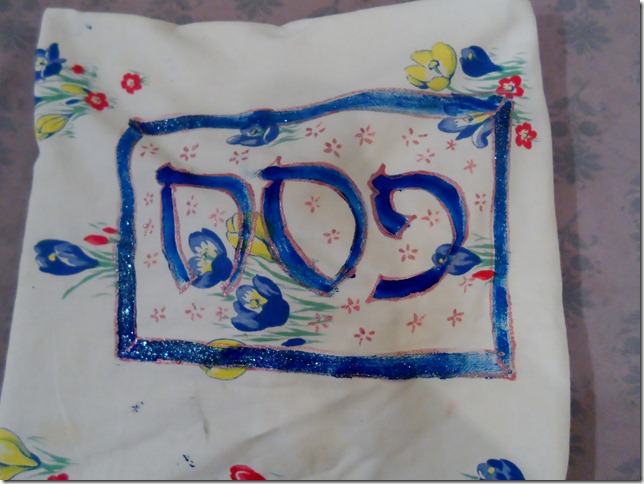
Sarah - lovely post - thank you. One bit of my auditory DNA is soooo not PC. I remember, circa 1963, age 6, being at (Episcopal) Sunday School, marching around in the church classroom & hall, led by the crucifer, singing 'Onward Christian Soldiers.' Another memory is that we sang hymns honoring the different branches of the military; the two I remember best were 'Semper Paratus' for the Coast Guard, and one with the chorus 'Oh hear us when we cry to thee / for those in peril on the sea.' That came back to me at the community church service the Friday after 9/11. Thanks for your post.
ReplyDeleteLisa...my father used to drive us to our Orthodox day school in the mornings. Often the garbage in his brain were percolate to the top. He used to sing Onward Christian Soldiers at the top of his lungs. My father grew up in Florida in the 1930's, before the age of cultural sensitivity. My father learned Christian hymns ( and racist minstrel songs) in school.
ReplyDeleteNot long ago I was at services in a synagogue that shares it's space with a Methodist church. I thumbed through the hymnal during services...I knew a shocking number of the hymns well, and I heard all of them in my father's booming voice.